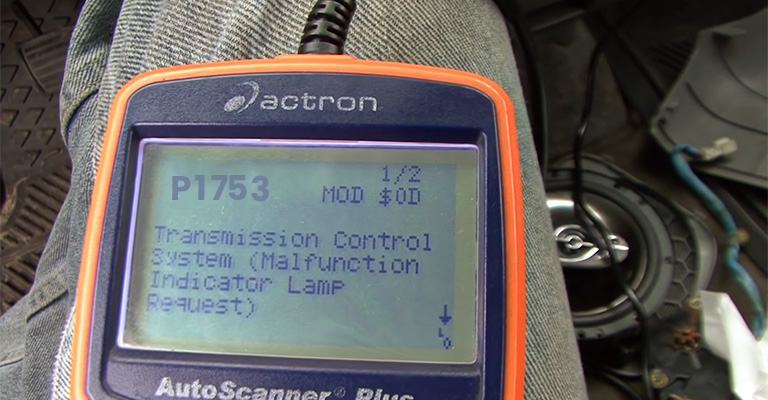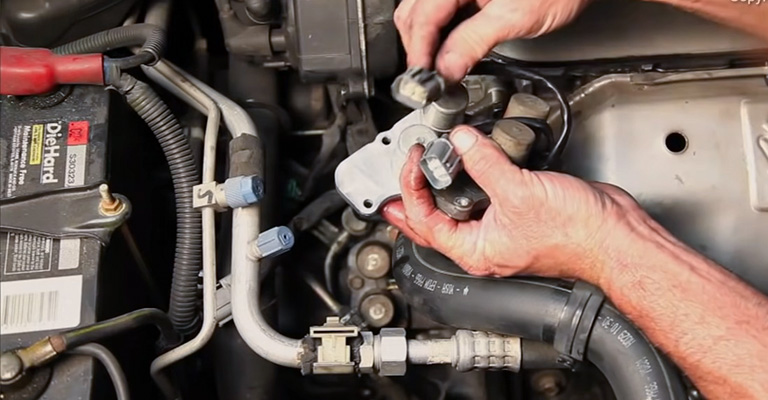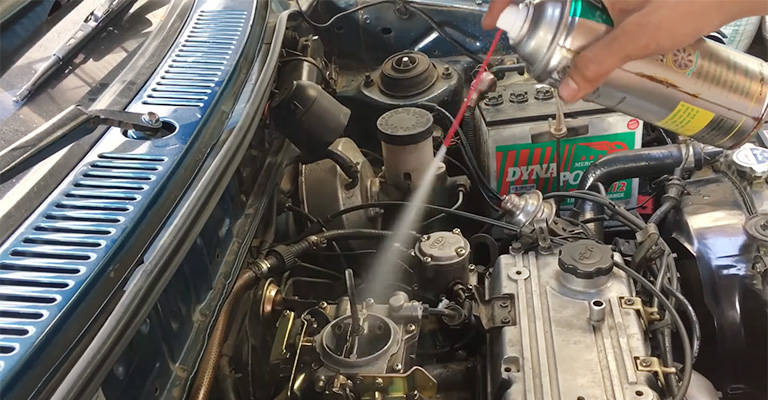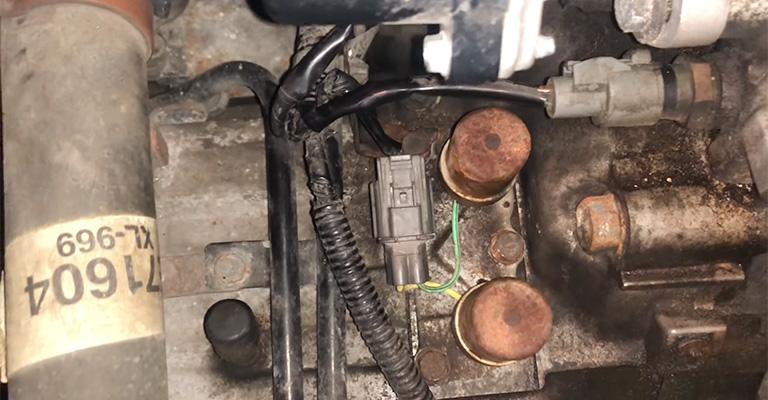There is a problem with the Transmission Solenoid that causes the P1753 code. A short circuit or malfunction has occurred in the solenoid that controls the liner pressure shift lock.
The (D4 light) is blinking because of this. Fortunately, you can fix it in no time at all. The TCM does not need to be changed, as most people think.

DTC P1753: Problem In Torque Converter Clutch Solenoid Valve Circuit
The torque converter clutch can be engaged or disengaged hydraulically by switching the solenoid valve. Hydraulic pressure is applied to the torque converter clutch when the torque converter clutch solenoid valve is turned on.
Hydraulic pressure to the torque converter clutch is interrupted when the solenoid valve is turned OFF. The powertrain control module (PCM) controls the torque converter clutch solenoid valve.
PCM receives a return signal when the driver circuit detects a short or open circuit. PCMs, detect malfunctions by storing a DTC if the return signal is inappropriate during command execution.
Testing The Solenoid

You should test the solenoid with a meter to confirm this issue. Here are the steps to follow:
- First, you should verify that the solenoid has an ohm value between 12 and 25.
- Make sure that the yellow wire goes back to the engine control module terminal D1 from the solenoid.
- Unplug the ECM and measure the amps using an amp meter if the wire harness and connections are good.
- You should see 1.2 to 0.4 amps of correct flow when the solenoid is activated.
- Those circuits should have the same current flow as terminal D7, the shift solenoid “A.”
- A faulty ECM is possible if the circuit tests well and there isn’t a problem with the harness or a connection.
- A professional technician must test it if it needs to be replaced.
What Are The Possible Causes Of The Code P1753 Honda?
P1753 is an OBD-II trouble code specific to Honda / Acura vehicles. There are several possible causes:
- Transmission fluid level is low
- The torque converter clutch solenoid is faulty
- There is a poor electrical connection in the torque converter clutch solenoid circuit
- There is an open or shorted solenoid harness on the torque converter clutch
- Dirty transmission fluid
In terms of cost, this issue has multiple sources, making it very difficult to estimate. You should have a professional mobile mechanic inspect your warning light if you have no symptoms beyond the warning light and trouble code.
How To Fix The P1753 Code?

Fixing this problem requires the following tools:
- A ratchet with a diameter of 10 MM
- Spray for cleaning carburetors
Step 1:
Under the distributor cap, you’ll find the shift lock solenoid.
Step 2:
In the next step, take a 10 MM and remove the three bolts that are holding the solenoid in place. Again, there will be a little leak, so get a small rag.
Step 3:
Your next step will be to spray carburetor cleaner into the solenoid.
Step 4:
The solenoid needs to be blown through with an air compressor for a few minutes until it looks clean, and all the transmission fluid is clean.
Step 5:
Replacing the solenoid in its original location.
Step 6:
After connecting the solenoid, disconnect the battery.
Step 7:
Plug the battery back in after about 30 seconds.
Step 8:
Check out what happens when you turn on the car. The D4 light should no longer blink, and the check engine light should no longer illuminate. The problem has been resolved.
Honda Tech Notes for Code P1753

There may be a short in the BLK/YEL alternator wire on some 1998-2002 Accords. The P1753 code may be set by the ECM/PCM as a result of this.
As well as intermittently blowing the No. 6 (15A) fuse in the fuse/relay box under the driver’s seat. Replace the blown No. 6 fuse and repair the damaged wire insulation to fix this problem.
Notes:
Occasionally, transmissions experience hard/harsh engagement into drive due to a broken wire. You will feel powerless on takeoff in the drive. You feel like you’re starting in third gear instead of first. The transmission will work as it should once you fix the broken wire.
Final Words
To recap, the P1753 represents a problem with the solenoid valve in the torque converter clutch. It can be a solenoid valve inside the clutch, a wiring issue, or a problem with the wiring. It is necessary to use a dealer scanner tool or an equivalent to test to pinpoint the problem.

Leave a Reply